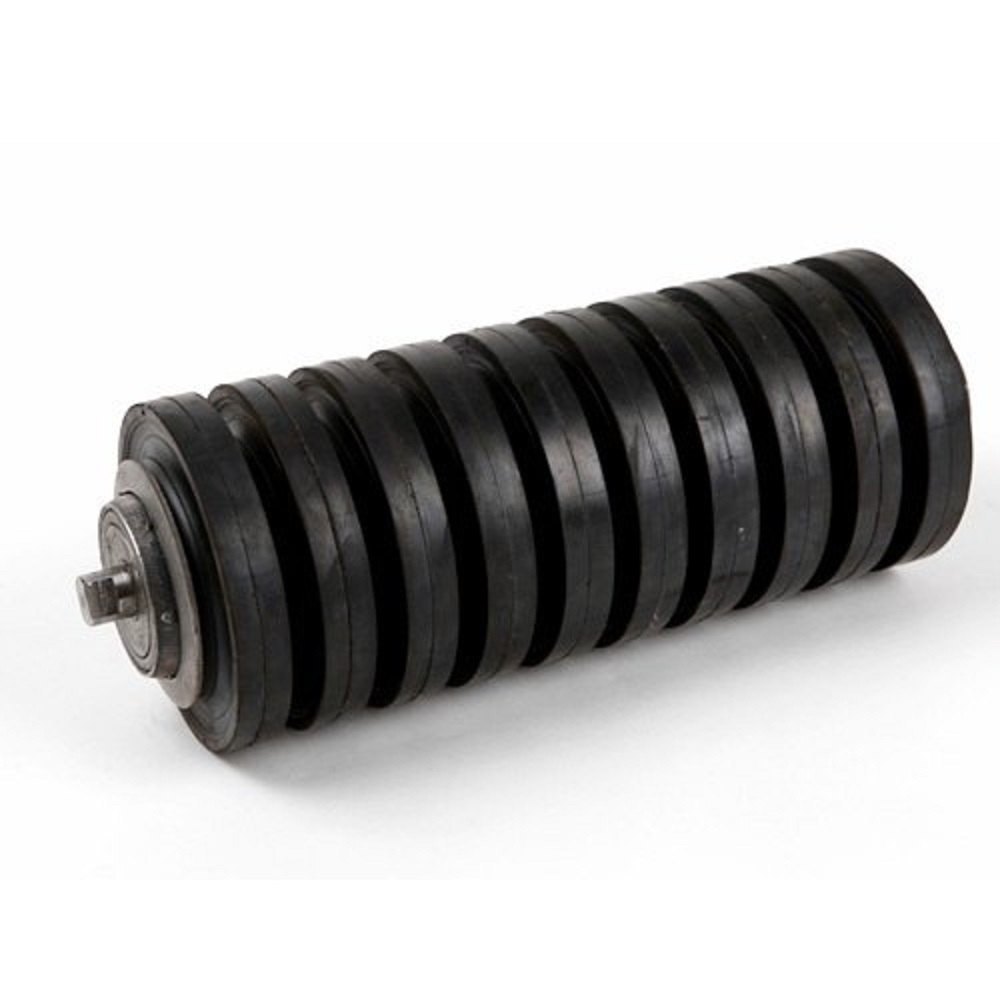Introduction and Application of Impact Idler Rollers
In the turbulent world of industry, conveyor belts play a vital role as the arteries for transporting materials and products. However, these lifelines are also exposed to numerous hazards. One of these hazards is the sudden and destructive impact caused by loading, friction, or technical failure. This is where impact idler rollers come in as a powerful protector, safeguarding the conveyor belt and its components from various damages.
In other words, an impact idler roller is a specialized type of roller that, with a rubber or plastic coating, takes on a critical task: absorbing shocks and vibrations caused by loading, material movement, and other factors. By creating a protective layer, these rollers protect the conveyor belt, rollers, and other system components from potential damage. In this article, we will further familiarize you with this type of roller and its applications.
Applications of Impact Idler Rollers
Impact idler rollers are widely used in packaging, transportation, pharmaceuticals, oil and gas, construction, agriculture, and many other industries.
Where are Impact Idler Rollers Placed?
These rollers are often placed at loading points, under hoppers, and during transfer.
- The point where heavy and bulky materials are dropped onto the conveyor belt is a high-risk area for the belt. Placing impact idler rollers at the loading point prevents the belt from tearing and wearing.
- The discharge point of materials from hoppers, due to the concentration of load, requires special protection. Using these rollers at this point will prevent damage to the belt and frame of the conveyor belt.
- The point of transfer of materials from one conveyor belt to another also imposes a lot of stress on the belt due to the change in direction and speed. Installing impact idler rollers at these points will prevent vibration and tearing of the belt.
Features and Specifications of an Impact Idler Roller
Impact idler rollers are produced in a wide variety of materials, dimensions, shapes, and load capacities. The choice of the right type of this part depends on various factors such as the type of application, the amount of load applied, the speed of rotation, the budget, and the environmental conditions.
Material
The most common material for impact idler rollers is cast iron. Cast iron is suitable for heavy-duty applications due to its high resistance to impact and wear. Steel impact idler rollers are also used for very heavy loads and in harsh environmental conditions. In addition, plastic rollers are suitable for lighter applications and where corrosion resistance is required.
Dimensions
Impact idler rollers are produced in different diameters from 10 mm to 100 mm and with different widths. The diameter and width of the roller should be selected according to the amount of load applied and the speed of rotation.
Shape
Impact idler rollers are produced in various shapes such as smooth, grooved, and spiked. Smooth rollers are suitable for general applications, while grooved and spiked rollers are used for applications where more friction is required, such as conveyor belts.
Load Capacity
The load capacity of an impact idler roller depends on its material, dimensions, and shape. Rollers are produced with load capacities ranging from a few kilograms to several tons.
Coefficient of Friction
The coefficient of friction of impact idler rollers depends on their material and surface. Rollers with a high coefficient of friction are suitable for preventing slippage.
Temperature Resistance
Impact idler rollers can be used in a wide range of temperatures. The selection of a roller with the appropriate temperature resistance depends on the environmental conditions of the application.
Structure of Impact Idler Roller and Sealing Arrangement
These rollers, with their unique structure and precise sealing arrangement, offer reliable performance and long life. The structure and sealing system of impact idler rollers consist of several layers, which are as follows:
- Felt Washer: The felt washer is placed at the beginning of the shaft and prevents dust from entering the roller.
- Rubber Washer: The rubber washer is placed behind the felt washer and prevents moisture from entering the roller.
- O-Ring: An O-ring is a rubber ring that is placed at the junction of the body and the shaft and prevents oil and grease from leaking.
- Oil Seal: The oil seal is located at the end of the shaft and prevents oil and grease from leaking out of the roller.
Components of Impact Idler Roller
Impact idler rollers, with their simple appearance, are made up of complex components that each have a unique function. In this section of the article, we will take a journey inside the impact idler roller and get to know its components thoroughly.
Shell (Tube)
The shell or tube is the backbone of impact idler rollers. This member is made of steel or aluminum and has functions such as protecting internal components, maintaining roller strength, and transferring heat.
Shaft
The shaft is the main axis of this device on which

